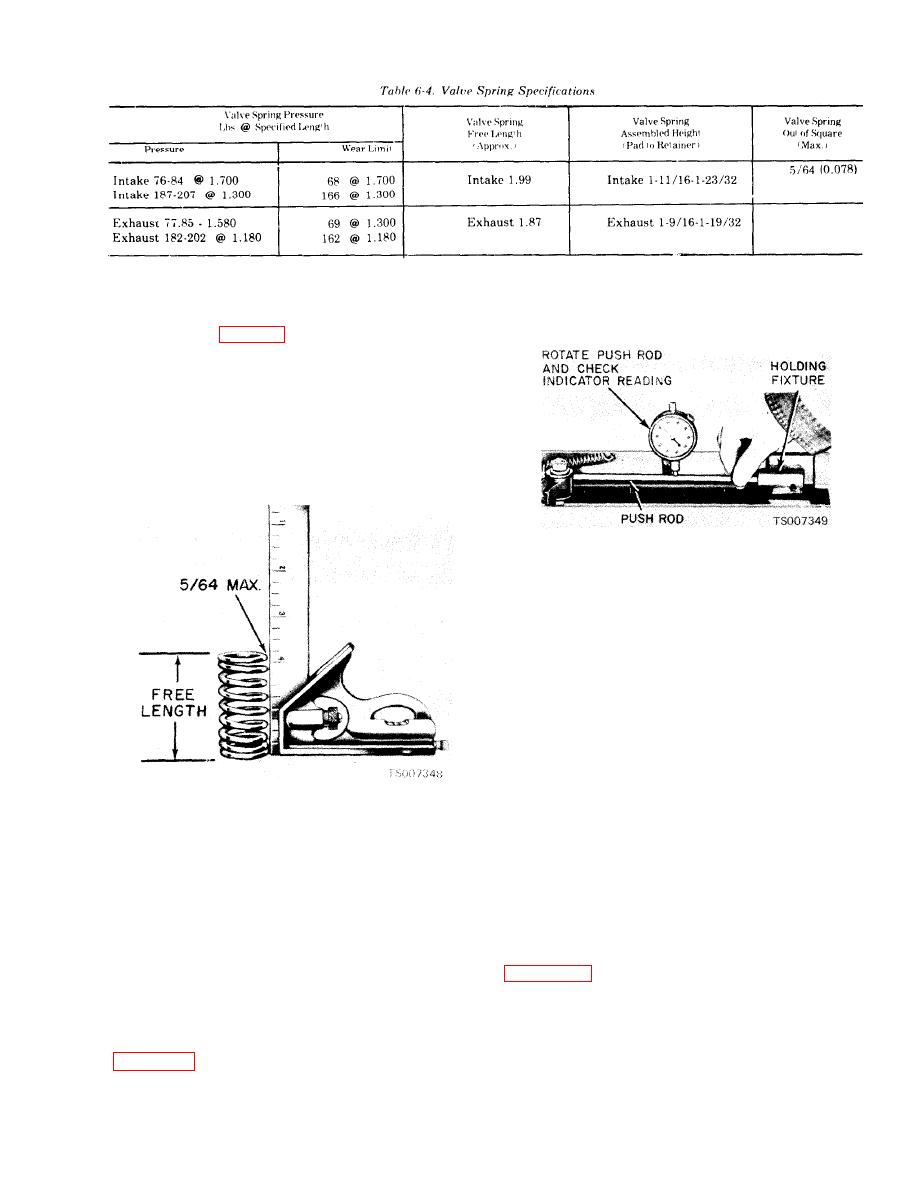 |
|||
|
|
|||
|
|
|||
| ||||||||||
|
|
 TM 10-3930-633-34
b. Valve Spring Squareness. Check each
spring for squareness using a steel square and a
surface plate (fig. 6-19). Stand the spring and
square on end on the surface plate. Slide the
spring up to the square. Rotate the spring slowly
and observe the space between the top coil of the
spring and square. If the spring is out of square
more than 5/64 inch, replace it. Follow the same
procedure to check new valve springs before
installation.
c. Hydraulic Lifter Cleaning. Clean the lifters
thoroughly in a bath of clean solvent, Federal
Specification P-D-680. Dry with a clean, lint-free
cloth.
NOTE
The valve lifter assemblies should be kept in proper
sequence so that they can be installed in their
original position. Inspect and test each lifter
separately so as not to intermix the internal parts. If
any part of the lifter assembly needs replacing,
replace the entire assembly.
d. Hydraulic Lifter Inspection.
(1) Inspect the parts and discard the entire
lifter assembly if any part shows pitting, scoring,
galling or evidence of non-rotation. Replace the
a. Pushrod Cleaning.
entire assembly if the plunger is not free in the
(1) Clean pushrods by scrubbing with
body. The plunger should drop to the bottom of
solvent, Federal Specification P-D-680.
the body by its own weight when assembled dry.
(2) Blow out the oil passage through the rod
(2) Assemble the lifter assembly and check
with compressed air.
for freeness of operation by pressing down on the
b. Pushrod Inspection.
pushrod cup. The lifters can also be checked with
(1) Check the ends of the pushrods for nicks,
a hydraulic tester to test the leak-down rate. See
grooves, roughness or excessive wear.
(2) The pushrods can be visually checked for
straightness while they are installed in the engine
by rotating them with the valve closed. They also
can be checked with a dial indicator as shown in
inches.
|
|
Privacy Statement - Press Release - Copyright Information. - Contact Us |